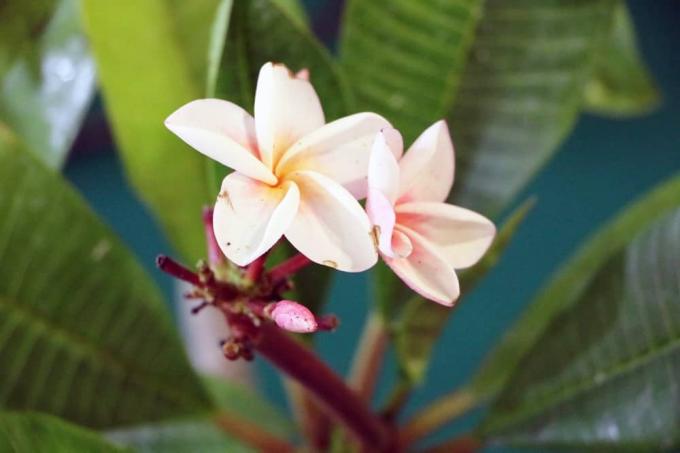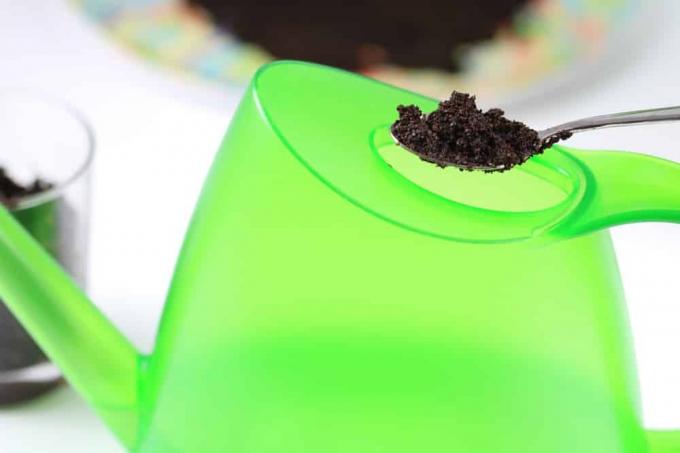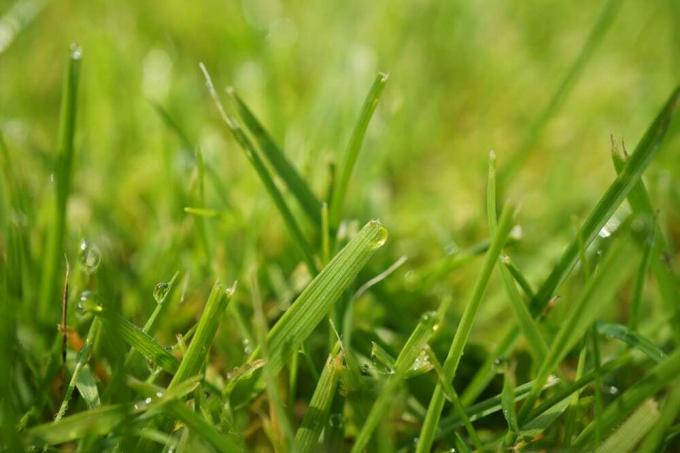

Table of contents
- Proper watering behavior
- Beginning and end of the hibernation
- Fertilize
- Appropriate fertilizers
- Conclusion
Also known as temple tree, pagoda tree or West Indian jasmine, the plumeria belongs to the succulent and dogbane family. While it has a symbolic character in its natural homeland, it is popular here in particular because of its fantastically beautiful and wonderfully fragrant flowers. According to its origin, it is not hardy in our latitudes. The frangipani is also a bit more demanding in terms of soil composition and watering and fertilizing behavior. Accordingly, there are a few things to consider when it comes to dosage and the composition of the fertilizer.
Proper watering behavior
When watering, it is important to make sure that the temple tree is neither too wet nor too dry. This charming plant does not like wet feet at all. Too much moisture can very quickly lead to the formation of rot and thus to death. It is better to water a little less than too much and ensure optimal drainage in the planter.
- Water regularly throughout the summer
- On hot days, water up to twice a day if necessary
- Higher water requirement in summer due to the large mass of leaves
- Above this, this plant evaporates a lot of water
- Not during lunchtime or pour in the blazing midday sun
- Otherwise sensitive roots could be damaged
- Water better in the morning or evening
- Allow the soil to dry between waterings
- Always remove water in pots or saucers shortly after watering
- Short-term drought is tolerated without problems
- For a high level of humidity, spray the leaves regularly with water
- It is also best in the morning or evening hours
It can sometimes happen, especially in winter, that the stem of the frangipani, especially in younger specimens, becomes somewhat wrinkled, comparable to an old, dried-up apple. The reason for this may be that their roots are not yet well developed enough to be able to absorb enough water. Then give about a quarter cup of water. Within the next 2-3 days the stem should be plump and firm again.
Tip:
During the summer, this plant does very well outdoors in a sheltered, draught-free and sunny spot. If possible, it should not be moved or moved during flowering, otherwise it could drop the flowers.
Beginning and end of the hibernation
Watering must be stopped completely from November so that the plant can prepare for winter dormancy. The first sign of this is the shedding of the leaves, but only in deciduous subspecies of West Indian jasmine, such as Plumeria rubra, which is most commonly found in this country. If one or the other flower umbel can still be seen on the plant, it may be that this is no longer fully mature and falls off.

But it shouldn't be cast for that reason. Exceptions are evergreen species such as the Plumeria obtusa, which retains a large part of its leaves even in winter, provided that the hibernation is species-appropriate. This species should only get a little water at longer intervals from November to the beginning/mid-April. As soon as the new leaves shoot out and, with a bit of luck, the first blossom can be seen from March/April, even deciduous species can be watered sparingly again. After another 3-4 weeks you can go back to the normal watering rhythm.
Fertilize
In addition to watering, high-quality soil and the right fertilizer are prerequisites for making the frangipani bloom. Incidentally, specimens grown from seed usually flower for the first time after 3 - 5 years, very rarely even after two years, provided the conditions are optimal.
Fertilization of young and older plants
- The most important nutrients for this plant are nitrogen, potassium and especially phosphorus
- Plants younger than three years are not yet capable of flowering
- In addition to phosphorus, they require an increased proportion of nitrogen
- A high phosphate content is particularly important for adult plants
- Phosphorus promotes flowering and root growth
- Fertilize continuously during the growth phase from April/May to September
- Administer special fertilizer in the appropriate dosage once a week
- Fertilize young plants from the age of 2 months at half concentration every two weeks
Tip:
When fertilizing the frangipani, it is advisable to ensure an even supply of nutrients, as is the case in their natural habitats. Over-fertilization should be avoided at all costs, as this makes this exotic beauty lazy to bloom.
Appropriate fertilizers
The commercially available special fertilizers for the temple tree usually contain a balanced ratio of the most important nutrients. The concentration of the main nutrients nitrogen, phosphorus and potassium (N, P, K) in these fertilizers is usually in a ratio of 10:52:10 or 10:30:10. To fertilize, add 1-2 g of this fertilizer to 1 liter of irrigation water.

For young plants, the addition of 0.5 g of such a fertilizer per liter of water is recommended. Commercial cactus fertilizers have also proven their worth for young plants that are to be cultivated throughout the winter. Organic fertilizers such as B. Cow dung are only suitable to a limited extent. They can serve as basic supplies at most. They are usually too nitrogen-heavy.
Conclusion
The temple tree is undoubtedly one of the most beautiful exotic plants that can also be cultivated in this country. They enchant with their spectacular and, depending on the variety, more or less intense floral scent that makes you want to go on vacation. It should not be watered too much or too little, although it rots much faster than it dries up. With special plumeria fertilizer, she gets all the nutrients she needs in an optimal concentration. Despite everything, if there are children and pets living in the household, one should not forget that the plumeria, like all dogbane plants, is poisonous.
 garden editorial
garden editorial I write about everything that interests me in my garden.
Learn more about fertilizer

Lawn lime: Lime against moss in the lawn
As soon as moss appears in the lawn, many a hobby gardener becomes restless - because soon the moss carpet can take over entire areas. With lawn lime, however, the unwelcome visitor can be skilfully put in his place.

Build your own Bokashi bucket | DIY instructions
Most of the kitchen waste goes on the compost or in the organic bin to add it back to nature's cycle. But there is a way to gain valuable fertilizer beforehand. We show how easy it is to build a Bokashi bucket and use it to obtain liquid fertilizer on the balcony or even in the apartment.

These 8 plants don't like coffee grounds as fertilizer
Hobby gardeners swear by the effect of the coffee grounds. It is fertilizer, snail protection, soil conditioner and cat deterrent all at the same time. In addition, it is free of charge and occurs daily in the household. Most plants are strengthened, but some are sensitive to the addition of coffee. We clarify.

Fertilize Christmas roses properly: 11 effective home remedies
Christmas roses are special flowers because, unlike almost all other perennials, they bloom in winter. They are insensitive and frost-hardy, and they can also multiply independently. Here you can find out what needs to be considered when fertilizing.

Lawn Bokashi: 6 steps to a cheap & natural fertilizer
The name Bokashi is still largely unknown. This method of using grass clippings comes from Japan. With a little preparation and a special form of processing, the clippings become valuable, nutrient-rich fertilizer that can be easily distributed in the garden.

Wood ash as fertilizer | These 70 plants love barbecue and charcoal
Home gardeners with a fireplace or tiled stove receive a natural fertilizer for free. Charcoal and charcoal leave behind a dusty residue that is packed with valuable nutrients. Read here under what conditions wood ash is suitable as a fertilizer. These 70 plants benefit from the unorthodox nutrient supply.



